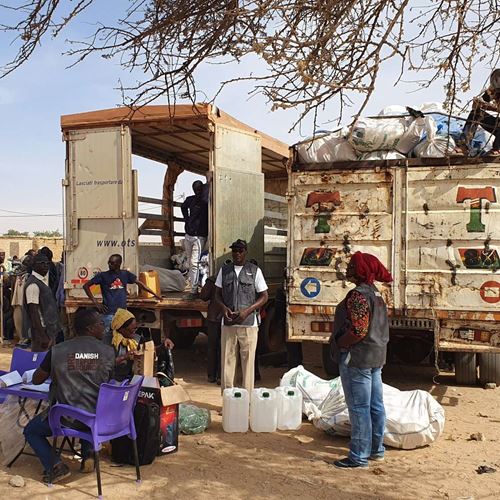
Global Displacement Forecast
7 file(s)
DR Congo, Burkina Faso, and Cameroon are among the countries where the most people will be forced to leave their homes in the coming years. This is forecasted in a new report from DRC Danish Refugee Council, which uses data to predict the world’s displacement trends in the near future.

Countries that are among the world's poorest and most challenged are also where the most people will be forcefully displaced throughout this year and 2022. That is one of the projections in DRC Danish Refugee Council's first Global Displacement Forecast report.
According to the report, a large number of people will be displaced in so-called "forgotten crisis areas", where there is a lack of financial support and international attention. This includes DR Congo, where it is predicted that conflict and natural disasters will displace as many as two million people. And while the Sahel region has made both media and political headlines, only 17% of humanitarian needs in Burkina Faso are currently funded. Next year, Afghanistan, Ethiopia, Cameroon, and Nigeria are forecasted to see the largest numbers of displaced.
“The report provides an overview of the crises that need special international support and attention in the immediate future. It is a tool that we and other humanitarian actors can use to prioritize our resources and deploy where our help is most important,” says Charlotte Slente, Secretary General of DRC Danish Refugee Council. “But the report is also a call to action for decision-makers to intervene - both via diplomacy and through financial support to mitigate or reduce some of these crises.”
The report was compiled using data analysis tool Foresight, which collects information on more than 120 indicators concerning conflict, governance, economy, climate, human rights, and societal trends. Combining algorithms and analysis the report predicts future displacement trends and estimates that the number of displaced people will increase by 3.7 million this year and by 7.2 million in 2022 compared to the number in 2020. This means that more than 10,000 people will have to leave their homes every single day. The vast majority will seek protection within the borders of their country or in neighboring – typically low-income – countries, thereby putting these further under pressure.
"The report clearly indicates that it is useless to close our eyes and hope crises disappear by themselves. Long-term conflicts will continue to create new displacement scenarios, which is why action is needed," says Charlotte Slente. "Unfortunately, we see how the gap between humanitarian needs and the resources available to cover these needs continues to grow globally. That's also why a tool like Foresight is useful, as it enables us to engage as early as possible in order to minimise escalation and provide humanitarian assistance."

7 file(s)